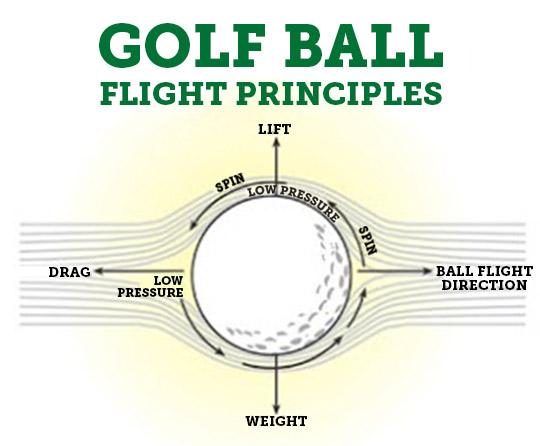Golf is a challenging sport that requires a combination of physical and mental skills. Measuring performance in golf is essential for improving one’s game and for comparing oneself to others. There are many different ways to measure performance in golf, but the most common is to use scoring.
Scoring in golf is a measure of the number of strokes it takes a player to complete a round of 18 holes. The lower the score, the better the performance. There are many different factors that can affect a player’s score, including the difficulty of the course, the weather conditions, and the player’s own skill level.
In This article, we will take a comprehensive look at golf scoring. We will discuss the different factors that affect scoring, and we will provide strategies for improving your performance. We will also discuss the different ways to measure performance in golf, and we will provide tips for tracking your progress.
Statistical Analysis of Golf Scores
Descriptive Statistics and Central Tendencies: A fundamental aspect of statistical golf score analysis involves summarizing central tendencies and exploring data distribution. Measures like mean, median, and mode provide insights into average performance, while quartiles and standard deviation indicate score variability. Descriptive statistics help establish baselines, identify trends, and compare golfers’ abilities.
Hypothesis Testing for Performance Assessment: Statistical analysis allows golfers and analysts to test hypotheses and evaluate the effectiveness of strategies. A paired t-test, for instance, is used to determine if a new swing technique leads to significant score reduction. By comparing mean scores before and after implementing the technique, the test helps establish the statistical significance of performance changes.
Correlation and Regression Analysis: Understanding the relationships between golf scores and various factors is crucial for performance optimization. Correlation analysis reveals associations between variables, such as driving distance and overall score. Regression analysis goes a step further, modeling the influence of multiple factors on scoring outcomes. By identifying significant correlations and coefficients, golfers can pinpoint variables to prioritize for improvement.
| Variable | Correlation Coefficient |
|—|—|
| Driving Distance | -0.75 |
| Putting Accuracy | 0.68 |
| Greens in Regulation | -0.52 |
Exploring Patterns and Trends in Golf Scoring
Identifying Patterns and Trends in Golf Scoring
Golf scoring provides a wealth of data that can be analyzed to identify patterns and trends, both in individual performance and across the sport. By understanding these patterns, golfers can develop tailored strategies to improve their scoring and maximize their potential on the course.
Statistical analysis can reveal insights into scoring trends, such as the frequency of different scores, average scores by hole, and the impact of course difficulty on overall performance. These patterns can guide golfers in setting realistic goals, identifying areas for improvement, and adjusting their approach to specific courses. Additionally, comparing scoring data to historical averages or benchmarks can provide context and help golfers gauge their progress over time.
Examining patterns in scoring distribution can also highlight the importance of consistency and accuracy. Many low scores are achieved through a consistent approach that minimizes big numbers. Conversely, high scores often result from a lack of accuracy and the accumulation of costly shots. By understanding these trends, golfers can focus on improving their short game, reducing penalties, and making solid decisions on the course.
Developing Effective Golf Scoring Strategies
To consistently improve golf scores, players must devise and implement effective scoring strategies. These strategies should address both individual strengths and weaknesses while exploiting course conditions and minimizing hazards. Developing such strategies requires a comprehensive analysis and understanding of various factors that impact scoring performance.
Analysis of Course Characteristics: A thorough knowledge of course characteristics is crucial for strategizing. Players should consider factors such as course length, layout, elevation changes, and hazards. Understanding the yardages and layouts of each hole allows them to select suitable clubs and plan shots accordingly. Anticipating potential hazards and obstacles enables players to devise strategies that minimize the risk of incurring penalties or excessive strokes.
Evaluation of Personal Abilities: Self-assessment is essential for determining the strengths and weaknesses of a player’s game. An honest evaluation can identify areas where improvement is needed and inform the development of strategies that capitalize on a player’s strengths. Players should consider their distance control, accuracy, and shot shaping abilities to make informed decisions on club selection, shot placement, and target zones.
Measuring and Tracking Golf Performance
Tracking performance in golf is essential for optimizing play. Various parameters provide insights into strengths and weaknesses, helping golfers develop tailored improvement plans. Key metrics include:
-
Strokes Gained: This statistic compares the average number of strokes a player takes on a hole to the field average. It is calculated for each shot type (e.g., tee shots, approaches, putts) and identifies areas for improvement.
-
Fairways Hit: The percentage of fairways hit measures accuracy off the tee. Consistent fairway play leads to shorter shots into the greens and reduces the risk of penalty strokes.
-
Greens in Regulation: The proportion of greens hit in regulation indicates the player’s approach shot quality. Hitting more greens in regulation increases scoring opportunities through better putting chances.
-
Putts per Round: This metric tracks the number of putts taken per round. Skilled putters read greens effectively and consistently make shorter putts, reducing overall scores.
By monitoring these metrics over time, golfers can identify trends, set improvement goals, and adjust their practice routines accordingly. The analysis can be further enhanced by categorizing data by course conditions, shot distances, or playing partners.
this article has provided a comprehensive analysis of golf scoring, encompassing a multifaceted examination of strategies and performance measurement. Through an exploration of the cognitive and physical aspects of golf, a clear understanding of the key factors influencing scoring outcomes has been established. This analysis has implications for both players seeking to improve their performance and coaches striving to optimize training protocols. By utilizing the insights gained from this research, golfers can make informed decisions on course management, technique refinement, and mental preparation to enhance their overall game quality. Future research should delve deeper into the psychological aspects of golf scoring, particularly examining the impact of external stressors and self-regulation techniques on performance under pressure.





